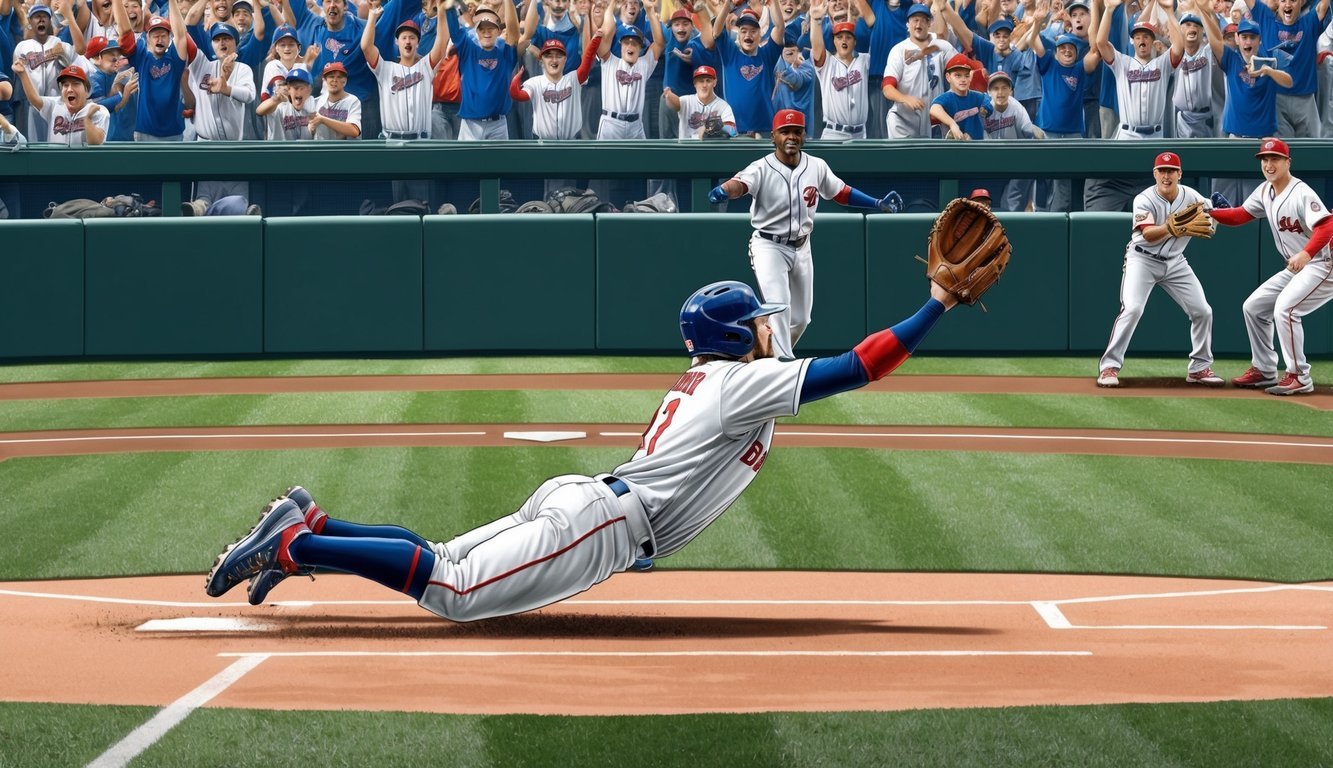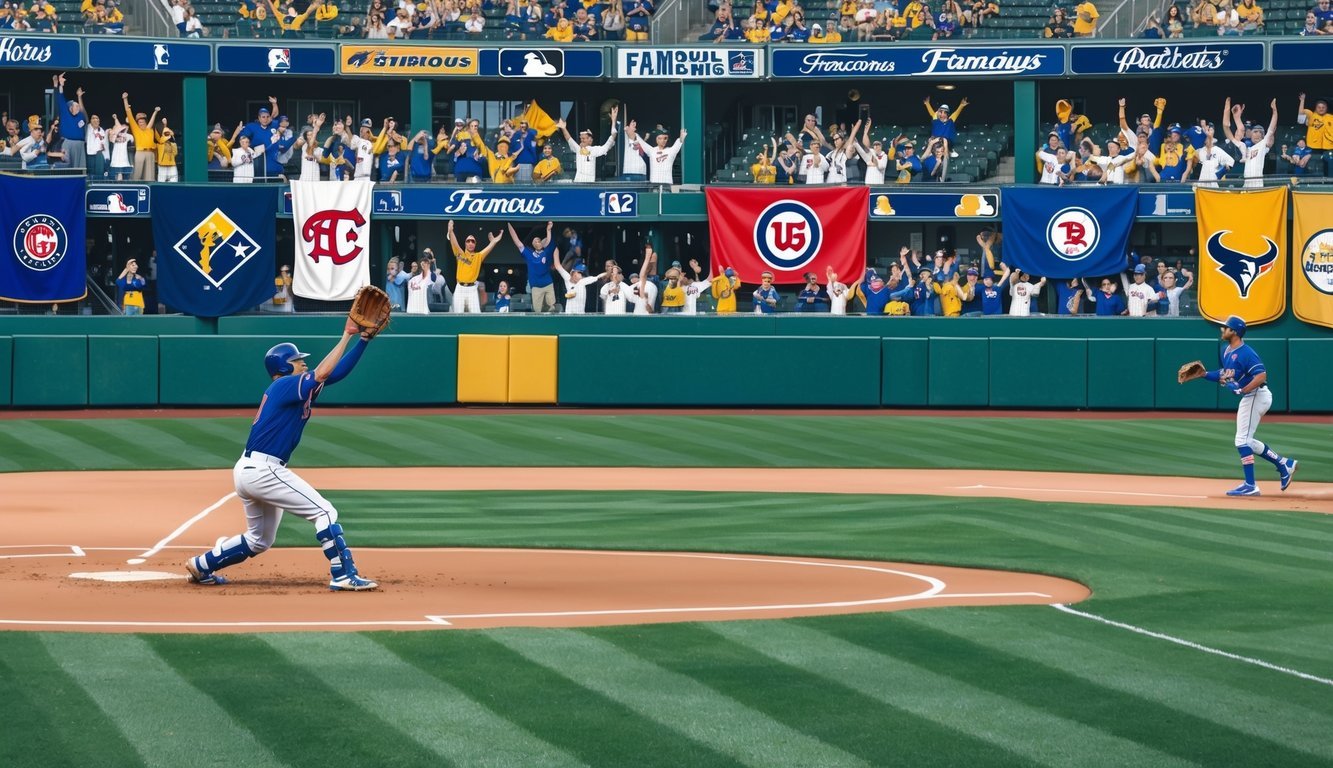Left field has seen some of baseball’s greatest legends.
From power hitters to defensive wizards, this position has seen extraordinary talent throughout MLB history. Ted Williams, Stan Musial, and Barry Bonds are often considered the top three left fielders of all time.
Their combined skills at the plate and in the field set them apart from their peers.
These legendary players not only excelled individually but also helped shape the game we know today.
Their contributions go beyond statistics, inspiring generations of baseball fans and aspiring athletes.
While debates about rankings continue, there’s no denying the impact these left fielders have had on America’s pastime.
History of Left Field Position
Left field has been an integral part of baseball since the sport’s early days.
It’s one of three outfield positions, alongside center field and right field.
In the 19th century, as baseball rules evolved, outfielders became more specialized.
Left fielders often had to cover more ground due to the predominance of right-handed batters pulling the ball to left field.
Some of the game’s greatest hitters have played left field.
Babe Ruth famously started his career as a pitcher before moving to the outfield, where he revolutionized the game with his power hitting.
The position has produced numerous Hall of Famers over the years.
Players like Ted Williams, Stan Musial, and Carl Yastrzemski set the standard for excellence in left field.
Defensively, left fielders need a strong arm to throw out runners trying to advance to third base.
They also must be adept at fielding balls hit off the wall, especially in parks with unique outfield configurations.
As baseball strategy has evolved, some teams have prioritized offensive production from left field.
This has led to left fielders sometimes being viewed as less defensively critical than center or right fielders.
Legendary Left Fielders
Left field has been home to some of baseball’s most iconic players, combining power hitting with defensive prowess.
These legends have left an indelible mark on America’s pastime.
The Pioneers
Ted Williams stands tall among early left field greats. “The Splendid Splinter” dominated at the plate, boasting a career .344 batting average and 521 home runs.
His keen eye led to an astounding .482 on-base percentage, the highest in MLB history.
Stan Musial, “The Man,” excelled for the St. Louis Cardinals.
His smooth swing produced 3,630 hits and a .331 lifetime average.
Musial’s versatility shone as he split time between left field and first base.
Carl Yastrzemski carried on the left field legacy in Boston. “Yaz” won the Triple Crown in 1967, leading the league in batting average, home runs, and RBIs.
His 23-year career with the Red Sox showcased consistency and longevity.
Modern-Day Heroes
Barry Bonds redefined power hitting from left field.
He set the single-season home run record with 73 in 2001 and finished his career with 762 homers.
Bonds’ exceptional plate discipline led to a record 2,558 walks.
Rickey Henderson brought speed and flair to the position. “The Man of Steal” swiped 1,406 bases, the all-time record.
Henderson’s leadoff prowess and 3,055 hits made him a dynamic offensive threat.
Manny Ramirez combined power and average as few others have.
His 555 home runs and .312 career batting average place him among the elite.
Ramirez’s clutch hitting in the postseason cemented his status as a modern legend.
Career Highlights and Achievements

The greatest left fielders in baseball history have achieved remarkable feats on the field.
Their accomplishments include World Series victories, prestigious awards, and record-breaking performances that have cemented their legacies in the sport.
These players have not only showcased their exceptional skills but have also played pivotal roles in transforming their teams into champions.
Among their contemporaries, some have stood out as the best second baseman in baseball history, contributing to their teams’ successes through remarkable teamwork and strategic play.
As fans celebrate their unforgettable moments, these left fielders remain an enduring symbol of excellence in the game.
World Series Triumphs
Many legendary left fielders played crucial roles in their teams’ World Series victories.
Ted Williams led the Boston Red Sox to the Fall Classic in 1946, though they fell short against the St. Louis Cardinals.
Carl Yastrzemski powered the “Impossible Dream” Red Sox to the 1967 World Series, showcasing his exceptional skills on the grand stage.
Barry Bonds, despite controversy, finally reached the World Series in 2002 with the San Francisco Giants.
He hit an impressive .471 with 4 home runs in the series, though his team ultimately lost to the Anaheim Angels.
Award Winners
Left fielders have consistently dominated individual awards.
Stan Musial captured three National League MVP awards during his illustrious career.
Barry Bonds set a record with seven MVP titles, solidifying his place among the game’s elite.
Gold Glove awards have also been a common accolade for top left fielders.
Carl Yastrzemski earned seven, while Barry Bonds claimed eight, proving their defensive prowess.
The Silver Slugger award, introduced in 1980, has frequently honored left fielders.
Rickey Henderson won three, while Bonds secured an impressive 12 Silver Sluggers throughout his career.
Record Breakers
Left fielders have etched their names in the record books with extraordinary performances.
Ted Williams achieved the last .400 batting average in 1941, hitting an incredible .406.
His career .482 on-base percentage remains the highest in MLB history.
Rickey Henderson revolutionized the leadoff role, setting the all-time record with 1,406 stolen bases.
He also holds the record for runs scored with 2,295.
Barry Bonds smashed the single-season home run record in 2001 with 73 long balls.
He later surpassed Hank Aaron’s career home run mark, finishing with 762.
Pete Rose, who spent significant time in left field, became MLB’s all-time hits leader with 4,256 base hits over his 24-year career.
Statistics and Records

Left fielders have left an indelible mark on baseball’s record books.
Their impressive stats showcase their offensive prowess and defensive skills.
The all-time leader in career runs scored is a left fielder, with an astounding 2,295 runs.
This record underscores the position’s importance in generating offense.
Home runs are another area where left fielders shine.
The career home run record stands at an incredible 762, set by a legendary left fielder known for his power hitting.
Here are some key offensive statistics for top left fielders:
| Statistic | Importance |
|---|---|
| OPS | Measures overall offensive production |
| OPS+ | Adjusts OPS for ballpark and era |
| Slugging | Reflects power hitting ability |
Many left fielders have earned multiple All-Star selections, highlighting their consistent excellence.
Some have racked up 10 or more appearances in the Midsummer Classic.
Defensively, left fielders have also excelled.
Several have won multiple Gold Glove awards, demonstrating their fielding prowess.
fWAR (Fangraphs Wins Above Replacement) provides a comprehensive measure of a player’s value.
Top left fielders often accumulate impressive career fWAR totals, sometimes exceeding 100.
These statistics paint a picture of left field as a position filled with well-rounded, impactful players who have significantly influenced the game of baseball.
Teams and Franchises

Left fielders have played crucial roles for many MLB teams throughout history.
Some became franchise icons, while others made impacts across multiple organizations.
Iconic Franchise Players
Ted Williams defined left field for the Boston Red Sox.
His 19-year career with the team solidified him as one of baseball’s greatest hitters.
Williams hit .344 lifetime and smashed 521 home runs.
Carl Yastrzemski carried on the Red Sox left field legacy.
He spent his entire 23-year career in Boston, winning the Triple Crown in 1967.
Yaz racked up 3,419 hits and 452 homers.
For the Detroit Tigers, Willie Horton patrolled left field for 15 seasons.
He hit 262 home runs for Detroit and helped the team win the 1968 World Series.
Journeymen and Multiple Teams
Rickey Henderson played for nine different teams, but he’s most associated with the Oakland Athletics.
The “Man of Steal” swiped 1,406 bases and scored 2,295 runs in his career.
Gary Sheffield showcased his power-hitting skills for eight MLB clubs.
He belted 509 home runs and drove in 1,676 runs while playing for teams like the Marlins, Dodgers, and Yankees.
Manny Ramirez made his mark with both the Cleveland Indians and Boston Red Sox.
He hit .312 with 555 home runs over his 19-year career, winning two World Series titles with Boston.
